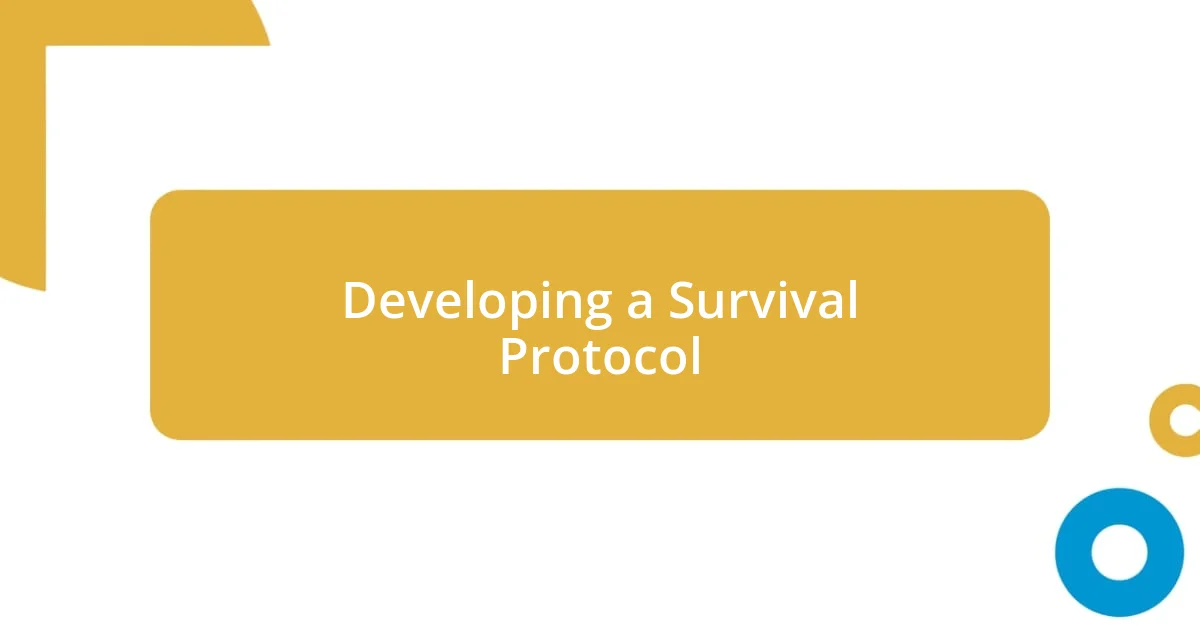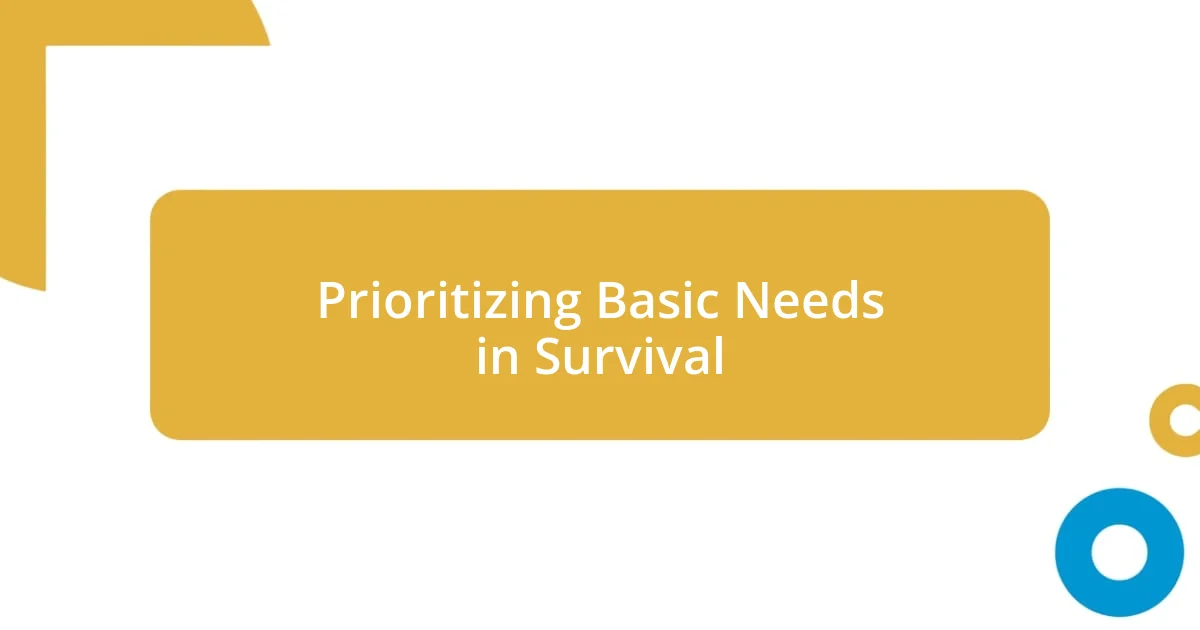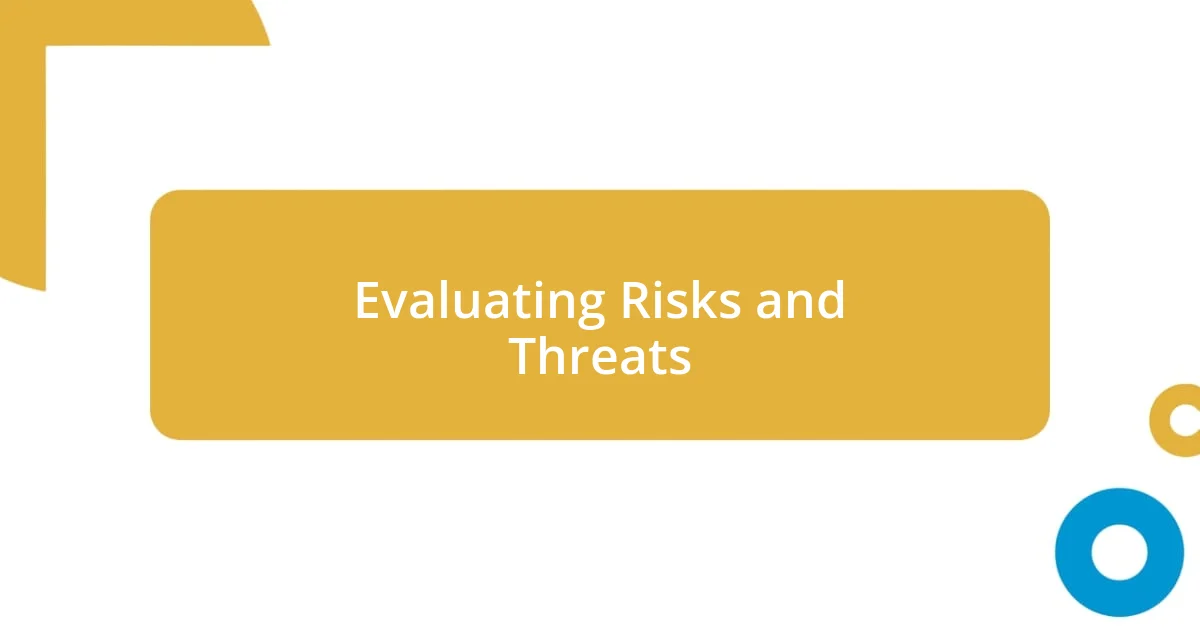Key takeaways:
- Personal survival planning involves mental preparation and emotional resilience, not just physical supplies.
- Essential survival skills include fire building, first aid, navigation, water sourcing, shelter building, and self-defense, all of which boost confidence in crises.
- Regularly practicing your survival plan, including simulating emergencies, enhances preparedness and reinforces skills under pressure.

Understanding Personal Survival Planning
Personal survival planning is more than just stocking supplies; it’s about preparing your mind and spirit for unexpected challenges. When I first started my personal survival plan, I realized it wasn’t just about being ready physically—it was a journey of self-discovery. How do I truly respond under pressure? This question became a vital part of my preparation.
I remember a time when I faced an unexpected power outage during a severe storm. I had a minimal survival kit prepared, but I quickly learned the value of having a flexible mindset. It’s not just the items that matter; it’s the ability to adapt. In a crisis, the first step can often be about how calmly you approach the situation rather than the tools you have at hand.
Moreover, understanding personal survival planning also means recognizing the emotional toll that emergencies can take. There are times when fear can paralyze us. I’ve had moments where anxiety crept in, urging me to flee rather than face the situation head-on. Embracing these feelings and planning for them is crucial—what strategies can you use to keep yourself grounded when the world feels chaotic?

Essential Survival Skills to Learn
Developing essential survival skills is a critical component of any personal survival plan. Beyond just gathering supplies, it’s about honing abilities that can keep you safe and resourceful in a crisis. For example, I still recall the first time I tried building a fire from scratch—it took me hours! Yet, the satisfaction of finally getting it going taught me the importance of patience and perseverance. In those moments of struggle, you realize that survival is not just about the end goal but also the learning journey.
Here are a few essential skills I believe everyone should consider learning:
- Fire Building: Essential for warmth and cooking.
- Basic First Aid: Understanding how to treat injuries can be lifesaving.
- Navigation Skills: Knowing how to read a map and use a compass is invaluable.
- Water Sourcing and Purification: Finding and making water safe is crucial.
- Shelter Building: Knowing how to create a safe space can save your life in an emergency.
- Self-Defense: Feeling safe requires knowing how to protect yourself if necessary.
Each of these skills enhances not only your survival capabilities but also your confidence in facing the unknown. I’ve seen how learning to navigate using a map can build an unshakeable sense of direction—both literally and metaphorically!

Creating a Survival Kit
Creating a survival kit is a vital step in personal survival planning. I remember the first time I set out to create mine; it felt overwhelming with so many options. I decided to keep it simple—one bag with essentials I couldn’t live without. That decision not only streamlined my preparation process but also gave me peace of mind knowing I had a safety net.
The contents of a survival kit can vary depending on individual needs, but certain items are universally crucial. For instance, I always pack water purification tablets, a multi-tool, a first-aid kit, and non-perishable food items. These essentials serve as the backbone of my kit, ensuring I’m prepared for various scenarios. I often ask myself: what would I need if I found myself cut off from everyday resources? This thought process genuinely shapes what I include.
To help visualize the components, I’ve created a comparison table for two common survival kit approaches: a compact emergency kit versus a comprehensive long-term survival kit.
| Compact Emergency Kit | Comprehensive Long-Term Kit |
|---|---|
| Lightweight and portable | Heavier and requires space |
| Includes basic necessities | Contains extended supplies for long duration |
| Great for short-term situations | Ideal for prolonged emergencies |
| Quick to assemble | Requires thorough planning |

Developing a Survival Protocol
When developing a survival protocol, I find that creating a step-by-step plan is crucial. Each step should address potential scenarios you might face. For instance, during my last hiking trip, I devised a simple protocol for emergencies—it involved specific actions to take if I got lost or injured. Just thinking through those steps in advance eased my anxiety about what I would do in an unexpected situation.
It’s also important to regularly practice your protocol. After all, a well-developed plan is only as effective as your ability to execute it under pressure. I remember running through my protocols during a camping weekend; when an unexpected storm hit, I was able to stay calm because I had rehearsed what to do. This kind of preparedness not only builds confidence but also sharpens your instincts in a real crisis.
Lastly, I believe in personalizing your survival protocol to fit your unique lifestyle and environment. For me, residing near the coast means prioritizing survival strategies for flooding or hurricanes. Have you considered how your surroundings influence your plan? By integrating location-specific risks into your protocol, you can prepare effectively and feel more secure, knowing you have tailored your strategy to meet your specific challenges.

Prioritizing Basic Needs in Survival
Understanding how to prioritize basic needs in survival is one of the most essential aspects I’ve learned over the years. Imagine being in an unfamiliar environment without access to basic resources—it’s a scenario that can induce panic. In my experience, focusing on water, shelter, and food in that order can make a significant difference. For instance, I once found myself on a weekend hike where I miscalculated a water source, leading to a tense situation. By prioritizing finding a reliable water supply first, I calmed my nerves and set a clear direction for what to do next.
When I talk about shelter, I think back to a camping trip where my friends and I underestimated a sudden change in weather. We got caught in a downpour, and let me tell you, seeking immediate shelter was crucial for maintaining our body temperature and keeping our spirits high. In situations like these, I’ve learned that having a plan for quick shelter options—whether it’s a tent or a makeshift arrangement—can greatly affect one’s morale. How many times have people overlooked this and faced unnecessary challenges? It’s something I’ve witnessed too often.
Food, while important, often takes a backseat compared to water and shelter in the initial survival stages. During my first solo camping trip, I thought about packing extra snacks, but it didn’t become my main priority. I found that even when I was physically hungry, my focus on hydration and safety helped me remain clear-headed. Reflecting on that, I’ve realized that maintaining physical health is intertwined with mental preparedness. So, when it comes to survival, I often ask myself: what’s essential right now? And by answering that honestly, I can prioritize effectively.

Evaluating Risks and Threats
Evaluating risks and threats is an essential first step before crafting my personal survival plan. I recall a road trip where I completely misjudged the area I was driving through, failing to account for the risks of falling rocks. It struck me that knowing the potential hazards ahead of time could have saved me not just a scare but valuable time. I often ask myself, “What if I had taken a moment to research my journey?” and the answer is clear: awareness can lead to better preparation.
In my experience, categorizing risks based on likelihood and impact helps me focus my planning. For instance, while camping in a national park, I faced the unexpected challenge of wild animals in the area. I quickly realized that certain animals posed a greater threat than others, influencing how I stored food and set up camp. Recognizing these threats and creating contingency plans made a significant difference in my peace of mind that trip. Have you ever considered how your surroundings can shift the risks you need to evaluate?
Moreover, I find that maintaining a flexible mindset about potential threats is vital. Once, during a hiking session, I had planned for minor injuries, but a sprained ankle caught me off guard. That experience taught me that often, risks we overlook can have substantial consequences. I now regularly evaluate not only the obvious risks but also those that might seem trivial. In doing so, I minimize surprises, and that, for me, has become an essential part of my survival strategy.

Practicing Your Survival Plan
Practicing your survival plan is like a rehearsal for the unexpected. I remember the first time I tried setting up a shelter in the backyard; it felt silly at first, but the actual task taught me invaluable lessons about speed and efficiency. Have you ever suddenly realized that what seemed simple in theory can become quite complex when you’re under pressure? This realization hit me when I struggled to secure the tarp against the wind. I learned that practicing these skills in low-stakes situations can give you the confidence needed when it truly matters.
Simulating emergency scenarios has been another eye-opening aspect of my practice. For instance, I once invited friends for a weekend campout and turned it into a spontaneous survival exercise. When a ‘storm’ rolled in—thanks to my buddy with a spray hose—all of us were forced to react quickly. The chaos and laughter of donning ponchos and finding improvised shelter highlighted my need for readiness. Sometimes, I ponder: how often do we take ourselves too seriously? Engaging in practice scenarios can make it fun while embedding essential survival skills into our memories.
Finally, the emotional impact of these practice sessions cannot be overstated. Each time I practice, I feel a mix of excitement and apprehension, but I always come away with a sense of accomplishment. I recall a chilly night spent on a solo hike where I had to light a fire in the dark. The glow of the flames wasn’t just warmth—it symbolized a victory over my fears and uncertainty. It’s crucial to remember that these practices not only build skills; they also strengthen your resilience. How does it feel to face your fears head-on in practice? For me, it’s empowering, adding a new layer to my survival mindset.














